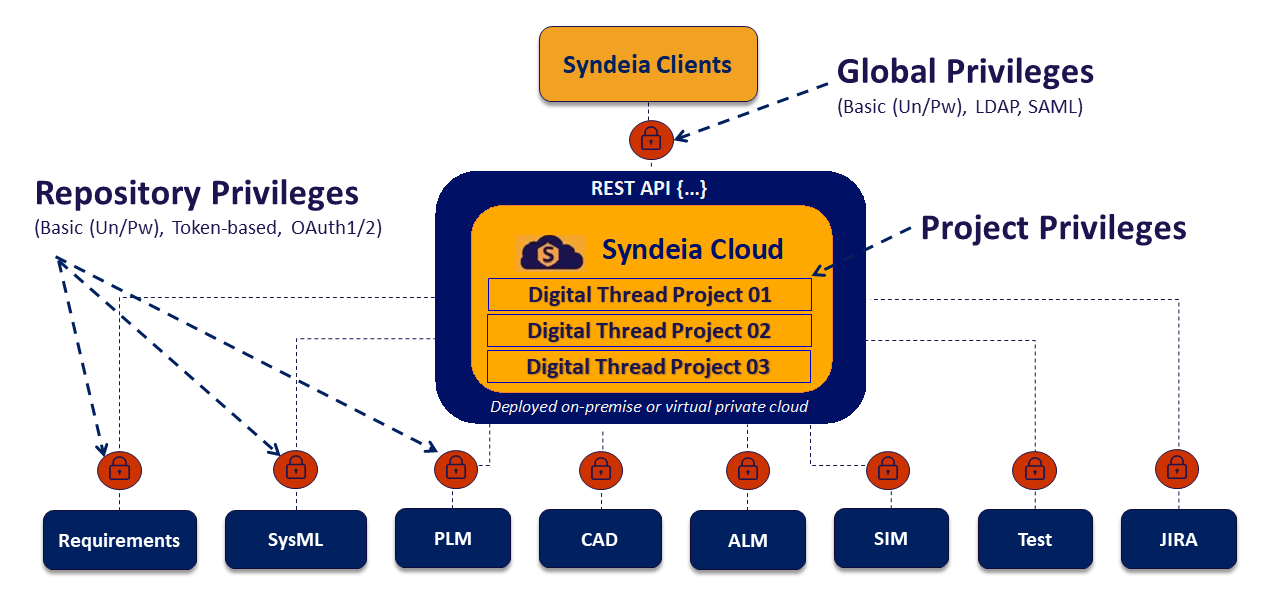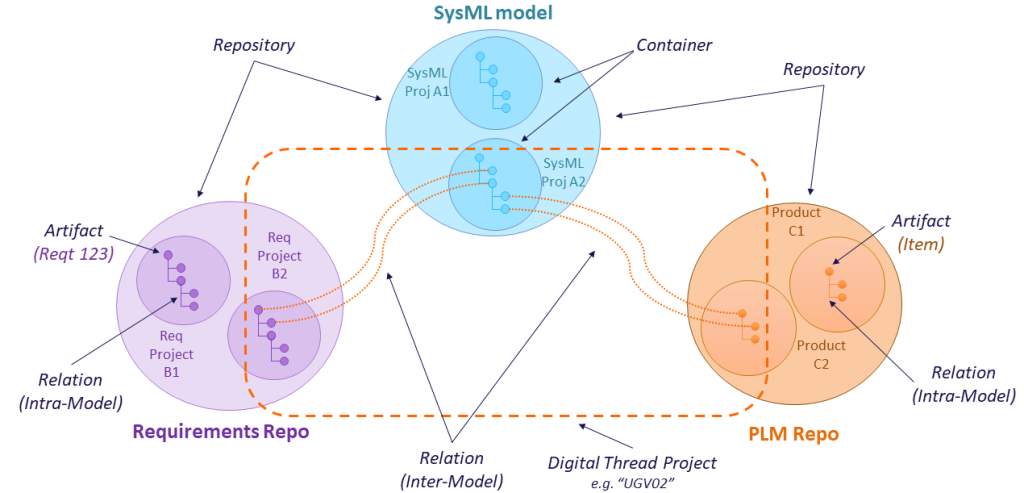Intercax is excited to announce the release of Syndeia 3.6. Over the next several weeks, we will be releasing a series of blog posts highlighting the new features that will accelerate concurrent digital engineering for mission-critical products and systems, all powered by enterprise-scale digital threads.
Security is as critical as accessibility in implementing digital engineering. Syndeia 3.6 provides additional security features at the Digital Thread Project level. Project level control allows organizations to house digital threads for multiple systems on a single instance of Syndeia Cloud (hosted on their own server or private cloud), while restricting which team members can view, edit and/or analyze data for a specific project. This becomes indispensable when multiple organizations are collaborating.
Figure 1 illustrates the three levels of data protection in Syndeia 3.6.

- Global Privileges govern who can access Syndeia Cloud through its REST API and what they can do. These are set by the Syndeia administrator/super-user, authentication can be set-up for basic username/password, LDAP and/or SSO, depending on the client.
- Repository Privileges govern the ability of Syndeia Cloud to access the contents of the underlying data repositories. These are set by the individual repository admins (i.e. the repository “owners”) and rely on the native authentication protocols provided by the repository vendors.
- Project Privileges govern who can access specific digital thread projects within the Syndeia Cloud database. These are set by the project lead who sets user access and privileges for their own project.
What is a Digital Thread Project?
As a federated approach to digital engineering, the system data remains in the individual repositories where it is created and used in the specific engineering domains. Syndeia created a network layer of inter-model connections between artifacts in the external repositories, where each connection retains just enough information about the artifacts at either end to be able to find and access those artifacts when the user wants to extract or share artifact attributes or internal relations.
A set of inter-model connections specifies a distinct system model and is referred to as a Digital Thread Project (DTP), as illustrated in Figure 2. Syndeia previously could create and store multiple DTPs but without user access control, i.e. all authenticated Syndeia users could access all DTPs.
Project-based access control introduced in Syndeia 3.6
- Reduces the administrative overhead of running multiple Syndeia instances,
- Reduces the scope and complexity of information presented to individual users, and
- Allows tailoring of access and agency to individual users at the global, project and repository levels.

Future Posts in this Series
In Part 2 of the Syndeia 3.6 Release series, we will present how project privileges are set in the new version. The following parts will describe how new project-specific reporting and analysis features in Syndeia 3.6 provide a dramatic expansion of out-of-the-box capabilities in the Syndeia Web Browser. Later in the series, we will introduce the new integrations and new REST API endpoints in Syndeia 3.6.
Other parts in this series:
- Syndeia 3.6 Release, Part 1: Digital Thread Project Security (This Post)
